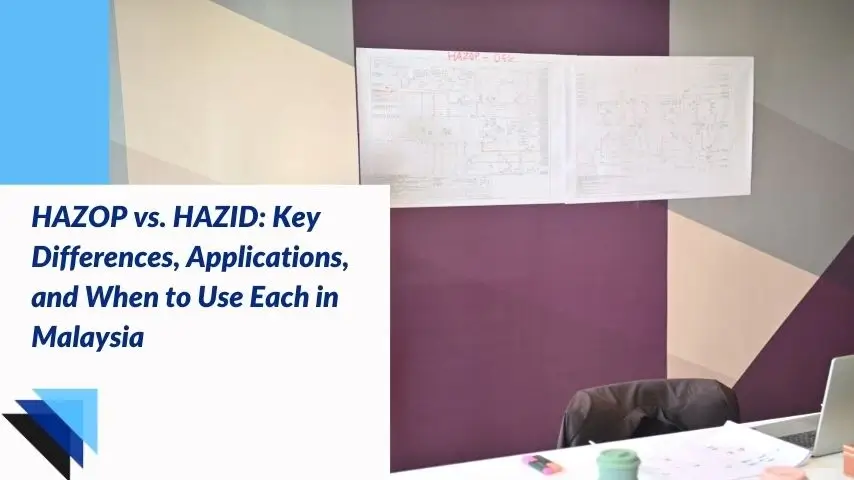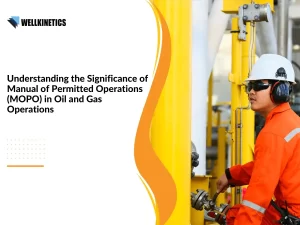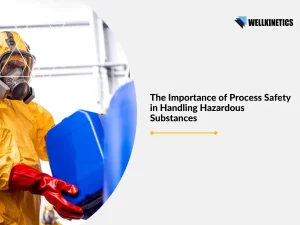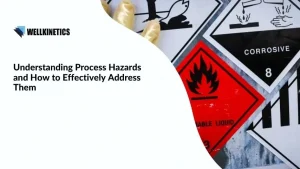HAZID (Hazard Identification) and HAZOP (Hazard and Operability Study) are essential methodologies utilized in the field of process safety to identify and analyze potential hazards associated with industrial operations. While both are crucial hazard identification methodologies in process safety, they serve distinct purposes and are implemented at different project stages. HAZID (Hazard Identification) is a broad, early-stage risk assessment tool that identifies potential hazards across an entire project scope. In contrast, HAZOP (Hazard and Operability Study) is a detailed, systematic examination of specific process deviations that could lead to hazardous situations. Understanding these differences is crucial for:
- Implementing the right methodology at the right project phase
- Ensuring comprehensive hazard identification and risk management
- Meeting industry safety standards and regulatory requirements.
In this comprehensive guide, we’ll break down the key differences between HAZID and HAZOP, explore their unique applications, and help you determine which methodology best suits your project needs. Whether you’re a safety professional or project manager, this information will enhance your approach to risk assessment.
Need a HAZOP or HAZID Study for Your Project?
Our experienced safety consultants can help you conduct a thorough risk assessment.
- What is HAZID (Hazard Identification Study)?
- What is HAZOP (Hazard and Operability Study)?
- What Are the Key Differences Between HAZID and HAZOP?
- What Are the Team Requirements for HAZID and HAZOP?
- Where Are HAZID and HAZOP Applied in Malaysian Industries?
- How Do HAZID and HAZOP Contribute to Risk Management and Safety?
- How Wellkinetics Can Help
What is HAZID (Hazard Identification Study)?
HAZID, or Hazard Identification Study, is a systematic and proactive approach used to identify potential hazards in industrial processes, facilities, or operations. It serves as an essential risk assessment tool implemented during the early stages of project development to ensure comprehensive safety measures.
What Is the Purpose and Objective of HAZID?
HAZID studies aim to systematically identify and evaluate potential hazards that could impact personnel, equipment, environment, or business operations. This structured methodology helps organizations:
- Identify potential hazards before they manifest
- Assess associated risks and their potential consequences
- Develop appropriate control measures
- Document findings for future reference
- Ensure compliance with safety regulations
How Is a HAZID Study Implemented?
The HAZID process follows a structured approach that involves:
1. Team Formation: Assembling a multidisciplinary team of experts
2. System Definition: Clearly defining the scope and boundaries
3. Hazard Identification: Using checklists and brainstorming sessions
4. Risk Assessment: Evaluating identified hazards
5. Documentation: Recording findings and recommendations
This systematic process ensures thorough examination of all potential hazards within the defined scope, enabling organizations to implement effective preventive measures early in the project lifecycle.
The study typically employs various techniques such as:
- Structured brainstorming
- Checklist-based assessments
- Expert judgment analysis
- Historical incident review
- Risk ranking matrices
What is HAZOP (Hazard and Operability Study)?
HAZOP, or Hazard and Operability Study, is a systematic and structured methodology used to identify potential hazards and operational problems in process systems. This comprehensive approach examines how deviations from design intent can lead to undesirable consequences in industrial processes.
What Are the Core Components of HAZOP?
A HAZOP study revolves around analyzing process parameters using specific guidewords like ‘more,’ ‘less,’ ‘no,’ or ‘reverse.’ These guidewords help identify potential deviations from normal operating conditions. The study systematically evaluates each process line, vessel, and equipment to understand what could go wrong and how it might affect operations.
The methodology breaks down complex processes into manageable nodes or study sections. Each node represents a specific part of the process where operating parameters could deviate from their intended design conditions. This structured approach ensures no potential hazards are overlooked.
How Is a HAZOP Study Conducted?
The implementation begins with thorough preparation, including gathering detailed process information and assembling a multidisciplinary team. This team typically includes process engineers, safety specialists, operators, and other relevant subject matter experts.
During the study sessions, the team:
- Reviews process and instrumentation diagrams
- Applies guidewords to process parameters
- Identifies possible causes of deviations
- Evaluates consequences of these deviations
- Determines existing safeguards
- Recommends additional safety measures where needed
The findings are documented in a structured format, listing all identified hazards, their potential consequences, existing safeguards, and recommendations for risk reduction. This documentation serves as a valuable reference for process safety management and operational improvements.
RELATED: How to Conduct a HAZOP Study: A Comprehensive Guide for Malaysian Industries
What Are the Key Differences Between HAZID and HAZOP?
The fundamental methodological differences between HAZID and HAZOP lie in their approach to hazard identification and analysis. While both are systematic safety assessment tools, they serve distinct purposes and follow different procedural frameworks.
How Do Their Methodologies Differ?
HAZID employs a broad-spectrum approach, examining potential hazards across an entire facility or project. It uses brainstorming sessions and checklists to identify various types of hazards, from physical risks to environmental concerns. The methodology focuses on identifying what could go wrong rather than how it could happen.
HAZOP, conversely, takes a more granular approach. It systematically analyzes specific process parameters using guidewords like “more,” “less,” or “no” to identify potential deviations. This methodology examines each process variable in detail, considering how deviations from normal operating conditions could lead to hazardous situations.
What Are the Differences in Study Process and Implementation?
HAZID studies typically follow a straightforward process of hazard identification, risk assessment, and control measure recommendation. The team uses experience-based judgment and industry standards to evaluate potential risks. The sessions are usually shorter and more focused on quick identification of major hazards.
HAZOP studies involve a more structured and time-intensive process. Each process parameter is examined systematically using guidewords, with the team analyzing:
- Possible causes of deviations
- Potential consequences
- Existing safeguards
- Required additional safety measures
- Specific recommendations for risk mitigation
The HAZOP process requires detailed documentation of each deviation scenario, making it more comprehensive but also more resource-intensive than HAZID. The team must thoroughly document their findings, including all identified deviations, consequences, and recommended actions.
Both methodologies require experienced facilitators and multidisciplinary teams, but HAZOP demands more detailed technical knowledge of the specific process being analyzed. While HAZID can be conducted with broader expertise, HAZOP requires in-depth understanding of process parameters and their interactions.
What Are the Team Requirements for HAZID and HAZOP?
A successful hazard identification study heavily relies on assembling the right team with appropriate expertise. Both HAZID and HAZOP studies require different team compositions to achieve their specific objectives.
Who Should Be on a HAZID Team?
HAZID studies demand a diverse team of professionals with broad industry knowledge. The core team typically includes project engineers, safety specialists, and operations personnel. Subject matter experts are brought in based on the specific hazards being evaluated, such as electrical, mechanical, or chemical experts.
How Is a HAZOP Team Structured?
HAZOP teams are more focused on process-specific expertise. The team must include a qualified facilitator, process engineers, operations representatives, and technical specialists familiar with the system under review. Control system engineers and maintenance personnel also play crucial roles in identifying potential process deviations.
Common Team Members
Both studies benefit from:
- Study Leader/Facilitator
- Process Safety Engineers
- Operations Representatives
- Project Engineers
- Technical Specialists
- Scribe/Secretary for documentation
What Level of Expertise Is Required?
Team members should have sufficient experience in their respective fields. For HAZID, broad industry experience is valuable, while HAZOP requires detailed knowledge of process parameters and operational conditions. The study leader should have extensive experience in conducting hazard identification studies and managing team dynamics.
ALSO READ: HAZOP in Oil and Gas Industry: How to Prepare, Conduct, and Improve Safety in Malaysia
Where Are HAZID and HAZOP Applied in Malaysian Industries?
HAZID and HAZOP methodologies find extensive applications across various industrial sectors in Malaysia, each contributing uniquely to safety and risk management protocols.
How Are They Used in the Oil and Gas Industry?
In the oil and gas sector, both HAZID and HAZOP studies play crucial roles in ensuring operational safety and risk management. HAZID studies are typically conducted during the conceptual design phase of new facilities, pipeline projects, or major modifications. They help identify potential hazards related to equipment layout, material handling, and emergency response scenarios.
HAZOP studies in this industry focus on detailed process analysis, particularly in areas like pressure vessels, compressor stations, and separation units. These studies examine specific operating parameters such as pressure, temperature, and flow rates to identify potential deviations that could lead to dangerous situations.
RELATED: Best Practices for Implementing Process Safety Management in the Oil and Gas Industry
What Role Do They Play in Chemical and Pharmaceutical Manufacturing?
The chemical and pharmaceutical industries utilize these methodologies to maintain strict safety standards and regulatory compliance. HAZID studies are essential during facility design and modification phases, helping identify chemical exposure risks, reactive material hazards, and storage safety concerns.
HAZOP analyses in these sectors concentrate on critical process parameters, particularly in reaction vessels, distillation columns, and mixing operations. These studies are vital for maintaining product quality while ensuring worker safety and environmental protection. They examine specific process variables like concentration, reaction time, and mixing speeds to prevent potential accidents or product quality issues.
Both industries benefit from the complementary nature of these studies. While HAZID provides a broad overview of potential hazards early in the project lifecycle, HAZOP delivers detailed insights into specific process operations. This comprehensive approach helps organizations maintain safety standards while optimizing operational efficiency.
RELATED: From Hazard to Harmony: Achieving Process Safety in the Pharma Sector
Stay Compliant and Minimize Risks in Your Industry
Whether you’re in oil & gas, manufacturing, or pharmaceuticals, our expert-led HAZOP and HAZID studies can help.
How Do HAZID and HAZOP Contribute to Risk Management and Safety?
Risk management and safety outcomes play a crucial role in both HAZID and HAZOP methodologies, though their approaches and results differ significantly in practice.
What Risk Assessment Approaches Do They Use?
HAZID employs a broader risk assessment matrix that evaluates potential hazards based on their likelihood and severity. This approach helps teams categorize risks into different priority levels, from low to critical, enabling efficient resource allocation for risk mitigation.
The assessment typically involves qualitative analysis, where experts use their experience and judgment to rate risks. This method is particularly effective during early project phases when detailed process information might not be available.
How Do They Improve Safety Implementation?
The safety outcomes from these studies directly influence project decisions and operational procedures. HAZID findings often lead to fundamental design changes or the implementation of inherently safer technologies. These changes can include:
- Modification of facility layouts
- Selection of alternative materials
- Implementation of passive safety systems
- Development of emergency response procedures
The results are documented in risk registers and action tracking systems, ensuring that identified hazards are properly managed throughout the project lifecycle. Regular reviews and updates of these documents help maintain the effectiveness of safety measures.
How Wellkinetics Can Help
At Wellkinetics, we are dedicated to enhancing safety and efficiency in your operations through our specialized expertise in hazard identification and risk assessment methodologies, including HAZID and HAZOP. Our approach is tailored to meet the unique needs of your organization, ensuring that all aspects of safety and regulatory compliance are comprehensively addressed.
1. Experienced consultants
Our team of experienced consultants brings years of industry knowledge and expertise to the table. We carefully assemble diverse teams of process engineers, safety specialists, and industry subject matter experts, all aligned to your specific operational context. This breadth of experience allows us to conduct thorough hazard assessments, ensuring no potential risks go unnoticed.
2. Customized worksheets and tools
We provide tailored HAZOP worksheets and advanced analysis tools designed to streamline the documentation and identification processes. Our resources ensure that your teams can effectively record findings, suggestions, and decisions with clarity and consistency. By integrating these structured tools into your studies, we facilitate efficient hazard identification and risk management practices.
3. Training programs
We prioritize training and competency development, offering regular programs that equip your team with the necessary skills and knowledge. From introductory training sessions to advanced workshops, we ensure that all participants are well-versed in the methodologies of HAZID and HAZOP, maintaining high standards of safety across your organization.
4. Ongoing support and reviews
Our commitment extends beyond initial implementation. We provide ongoing support and regular reviews to ensure that the methodologies remain effective and relevant within your organization. Our team works closely with you to assess the outcomes of implemented recommendations and to identify areas for further improvement. By fostering a culture of continuous learning and adaptation, we help guarantee that your safety protocols evolve in line with emerging industry standards and regulatory changes.
5. Seamless integration into existing processes
Understanding that every organization operates differently, we seamlessly integrate our services into your existing systems and workflows. Our goal is to minimize disruption while enhancing safety measures, allowing your team to focus on their core responsibilities while we manage the intricacies of hazard assessment and risk management.
6. Commitment to safety culture
At Wellkinetics, we believe that a robust safety culture is paramount to the success of any operation. We work with your team to instill a sense of ownership and accountability around safety practices. By encouraging open communication and collaboration, we aim to create an environment in which every team member feels empowered to contribute to hazard identification and mitigation efforts.
Learn more about our Process Safety Consultancy Services.




